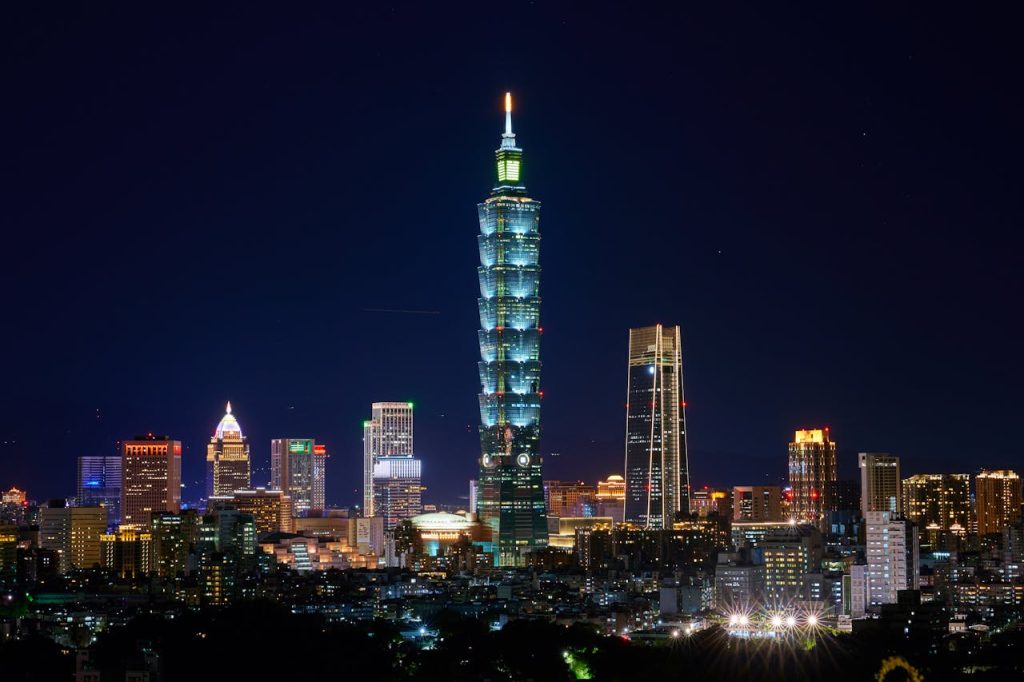Your cart is currently empty!
The Most Dangerous Places to Be if World War Three Erupts and the Truth Is More Unsettling Than Expected

The idea of World War III isn’t a distant fantasy; it’s a question whispered across dinner tables, online debates, and political briefings. With that in mind, we asked ChatGPT, an AI chatbot, a simple but unsettling question: “Where would be the worst places to be if a global war broke out?”. The answer, drawn from data, logic, and history, revealed more than just geography. It showed a reflection of us: the systems we’ve built, the alliances we’ve formed, and the fragilities we’ve ignored. In understanding where the world is most at risk, we also understand where humanity has the most to lose and where it must grow.

The United States: Power, Paradox, and the Price of Influence
The AI chatbot identified the United States as one of the worst places to be if a third world war began. Its global power makes it both strong and highly exposed. The same systems that project influence across the world also create vulnerabilities at home.
The U.S. operates the largest network of military bases, defense alliances, and digital infrastructure in history. Its economy, communication systems, and technology industries are deeply tied to global stability. This interdependence means any large-scale attack or disruption would have worldwide effects. The country’s dominance makes it a primary target, not because of ideology, but because of strategic value.

Cities such as Washington D.C., New York, Los Angeles, and San Francisco are often cited as potential targets. Washington houses the government and military command, New York drives global finance, and Los Angeles and San Francisco lead in technology and media. Striking any of these centers would cause political, economic, and psychological impact on an international scale.
Modern warfare would not stop at missiles or invasions. Cyberattacks could cripple power grids, disrupt communications, and paralyze financial systems. Studies on network vulnerability show that the more connected a system is, the more fragile it becomes when key nodes fail. The U.S. sits at the center of these networks, which magnifies both its control and its risk.
This prediction is not an alarmist scenario but a logical outcome of how power is distributed. A nation that leads in global governance and technology also bears the weight of global instability. The U.S. benefits from its reach but cannot easily shield itself from the consequences if those systems collapse.
Russia: Between Power and Peril
When assessing where a global conflict would strike hardest, the AI identified Russia as one of the most dangerous places to be. The logic is grounded in geography, history, and deterrence. Russia’s vast landmass, nuclear capability, and role as a central actor in current geopolitical tensions make it both an aggressor and a potential target in almost any major war scenario.
Russia’s vast military infrastructure and nuclear arsenal mean it would be involved from the start of any world-scale confrontation. Cities such as Moscow and St. Petersburg hold political, economic, and symbolic importance, making them key targets in any strike aimed at crippling command and communication systems. The country’s heavy concentration of military sites increases the danger for nearby civilian populations. According to the International Institute for Strategic Studies (IISS), Russia’s forces remain a major threat to European security despite equipment and personnel losses in recent conflicts.

Strategically, Russia’s position on the map adds further risk. It borders several NATO members and volatile regions, including Eastern Europe and the Arctic. These border zones act as pressure points where any miscalculation could quickly escalate into a wider war. Decades of military buildup in these areas have made them highly sensitive, with little room for error. As The Week noted, tensions between Russia and other major powers continue to serve as potential vectors for global conflict.
Russia’s pursuit of military strength and strategic dominance has long been viewed as a guarantee of safety. In reality, it magnifies its exposure. Analysts have also noted that Russia’s critical infrastructure, especially its energy sector, remains vulnerable to sabotage and cyberattacks The AI’s conclusion is clear: Russia’s security model, based on deterrence and force projection, comes with immense human risk. Its strength ensures involvement in any large-scale war, while its geography ensures proximity to conflict zones. This is not a judgment but a logical outcome of its role in global power dynamics.
East Asia: Flashpoints of the Future
“In East Asia, tensions in the Taiwan Strait, the Korean Peninsula, and the South China Sea place the region among the most dangerous places to be,” as noted by the AI chatbot.
East Asia is one of the most volatile theaters in any potential global conflict. The island of Taiwan is central to this risk. China has increased military activity around Taiwan and built up capabilities that would be applied if force were used. In an article by the Chatham House it was stated that “China has increased its military activity around Taiwan and deployed new landing barges in the South China Sea.”
Moreover, conflict in the Taiwan Strait would not remain local. Experts estimate that such a war could trigger major regional escalation. For example, the joint project from the Institute for the Study of War and the American Enterprise Institute highlights that Chinese campaigns against Taiwan could draw in allies and have far-reaching consequences. The Korean Peninsula also represents another major risk zone. Analysts argue that military confrontation in Northeast Asia could start there rather than in Taiwan, expanding the risk of a simultaneous multi-front war.

In addition, East Asia hosts multiple major economies, integrated supply chains, and dense population centers. A strike or blockade in these seas or over these territories would immediately disrupt global trade, energy flows, and digital communications.
Geographically and militarily, this is compact, which intensifies risk. Nations are in close proximity, borders are contested, and military assets are clustered. The AI’s model shows that small miscalculations could rapidly escalate because the buffer zones are minimal. The “kill chains” and anti-access/area-denial systems now focus on the first island chain, making adjacent nations vulnerable.
Beyond military threat, the human dimension is important. The densely populated region means civilian lives would be directly trapped in major conflict zones. Urban centers such as Taipei, Seoul, and Tokyo sit within missile range, and retreat options are limited. In such a scenario, resilience becomes as critical as defense. In short, East Asia stands out not because war is inevitable, but because the combination of strategic value, military readiness, and geographic proximity converges there like nowhere else.
The Middle East: Energy Chokepoints, Proxy Risks, and Great-Power Friction
The Middle East is also listed by the AI chatbot among the worst places to be in a global war because core energy corridors, active proxy networks, and dense military footprints make the region highly exposed to rapid escalation. The Strait of Hormuz remains the world’s most important oil transit chokepoint, with few viable alternatives if traffic is blocked, which would immediately amplify global shocks.
Conflict would not stay on land. The Red Sea and Bab el-Mandeb link the Indian Ocean to the Suez Canal, and recent attacks on shipping have already forced costly rerouting and raised insurance rates. Analyses show how these disruptions cascade into supply chains and prices, which illustrates why a wider war here would hit global trade fast.

Regional rivalry adds ignition points. Research by the International Institute for Strategic Studies documents Iran’s networked influence via partners and proxies that operate in Lebanon, Syria, Iraq, and Yemen, creating multiple fronts where sparks can spread. International Crisis Group warns that the Iran–Israel confrontation can shift from indirect clashes to direct strikes, a pathway to rapid, unpredictable escalation. The Council on Foreign Relations’ conflict tracker likewise notes the risk of escalation between the United States and Iran and the potential for broader regional involvement.
The region’s military density increases the danger to civilians. Multiple states and external powers base forces across the Gulf and Levant, which concentrates targets near large populations and critical infrastructure. Recent open-source mapping shows tens of thousands of U.S. troops spread across at least 19 sites, reflecting the scale of foreign military presence that could be drawn in quickly. A strike, blockade, or sustained drone and missile campaign in these waterways would constrain oil and container flows, drive up freight and insurance costs, and force long detours around Africa, all of which would amplify any global conflict’s first-order effects.
Where The Safest Place Is
When artificial intelligence analyzes our planet and lists danger zones, it isn’t predicting fate. It’s showing us a reflection of our priorities and fears. Machines learn from us. Every forecast of conflict is a reflection of human behavior: competition, insecurity, and mistrust. The AI didn’t invent these risks. We did.
That reflection is not a punishment; it’s a reminder. The greatest defense systems are not weapons or alliances but empathy, cooperation, and awareness. Peace is not a treaty signed by governments but a daily choice made by individuals: by you, by me, by how we listen, speak, and treat others.

Safety is not found in distance or geography but in awareness and compassion. It exists when we choose curiosity over judgment and connection over competition. If we can build technology that mimics thought, then we can build societies that practice compassion. If we can predict destruction, we can also design peace. The future doesn’t belong to predictions; it belongs to participation. When we learn to see each other not as enemies but as reflections of ourselves, the safest place will no longer be a country or a shelter. It will be within us.
